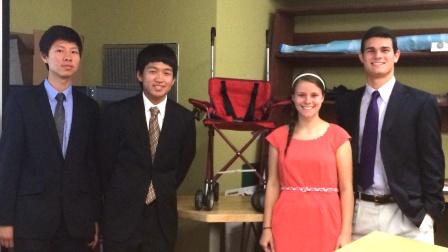 Earlier this month, KID had a chance to talk with Jonathan Midgett, an engineering psychologist at the U.S. Consumer Product Safety Commission (CPSC). We asked him some questions about product safety and human factors to better understand how important this field is to protect consumers and keep kids safe.
Earlier this month, KID had a chance to talk with Jonathan Midgett, an engineering psychologist at the U.S. Consumer Product Safety Commission (CPSC). We asked him some questions about product safety and human factors to better understand how important this field is to protect consumers and keep kids safe.
The leader of the Children’s Hazards Program Areas Team at the CPSC, Jonathan has a lot of know-how about how children’s products and children actually fit together. But what is it that an engineering psychologist does at the CPSC?
Jonathan explains his role as, “I evaluate the case reports of injuries and deaths associated with consumer products…and, as part of a team, evaluate emerging hazards and how to eliminate them or reduce their severity.”
So how does Jonathan’s background as a child psychologist trained in human factors engineering serve this important role? To understand this we first need to know a little bit about human factors.
Jonathan defines human factors as, “a branch of engineering concentrated on the interaction of humans with features of the physical environment.”
In other words, it’s looking at making things with a mind for how that thing will be used and, as Jonathan says, “It is much more than just the science of designing comfortable workstations.
“Human factors engineering is necessary for fitting products to their end users in ways that make them as useful as possible with as few dangers as possible,” Jonathan continues, “Products designed without an adequate consideration of human factors are more likely to be…potentially dangerous.”
During his time at CPSC Jonathan has seen this danger play out for children’s products many times.
In his own words, “I concentrate on juvenile products and toys. Essentially, I’ve been immersed in case reports of horrific tragedy for the last 13 years…It’s depressing sometimes.”
And despite the CPSC’s best efforts the children’s products that cause these tragedies sometimes make it to the shelf.
“People tend to think that everything for sale in the U.S. has been inspected for safety prior to being placed on the shelf in a store. This is not necessarily true…Consumers need to be mindful that any product could contain a defect,” says Jonathan.
But even though dangerous children’s products are put on the shelf and sometimes a child is hurt, Jonathan has no regrets working for the CPSC as an engineering psychologist.
“It isn’t glamorous work, but I like helping people safeguard their children; it’s rewarding.”


